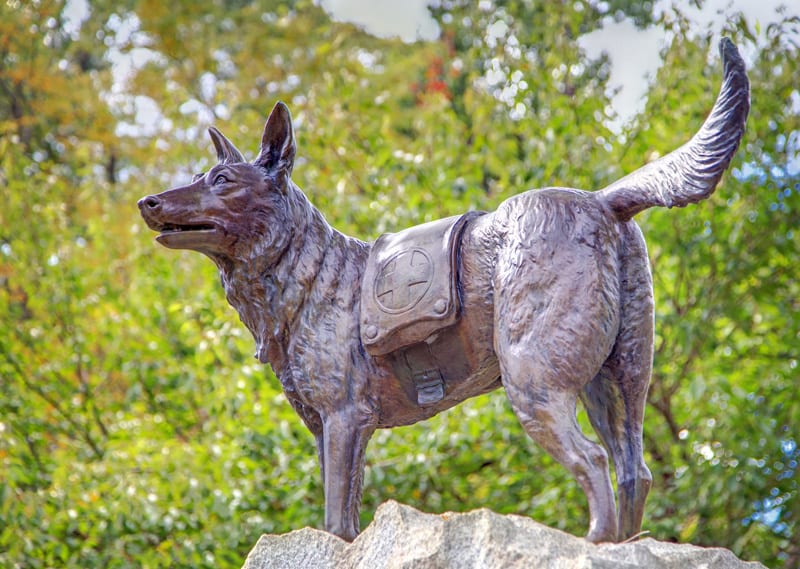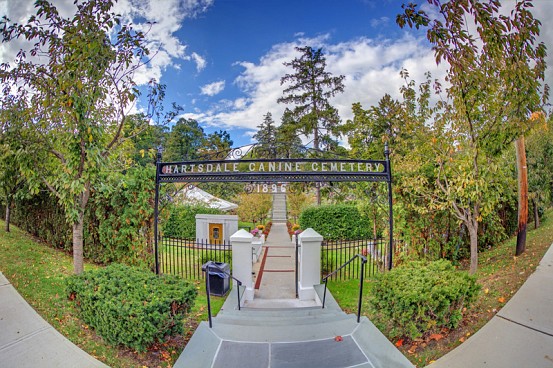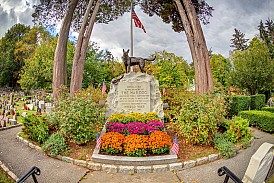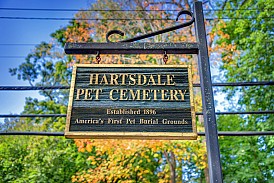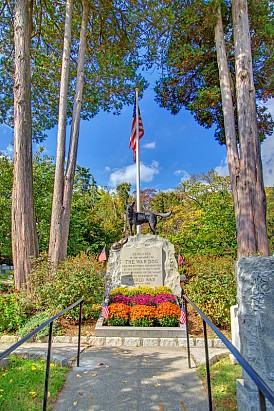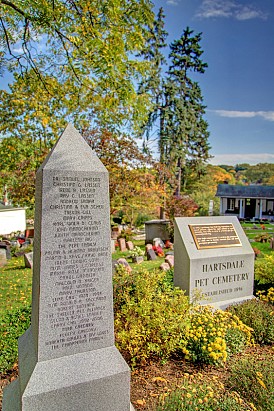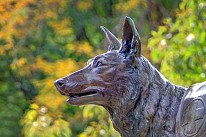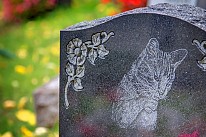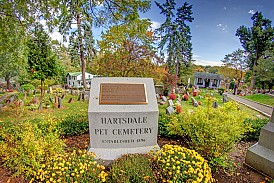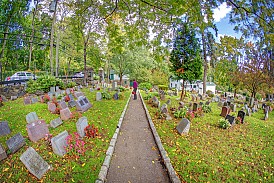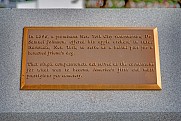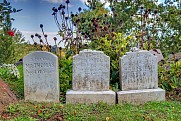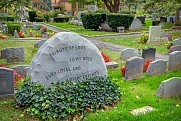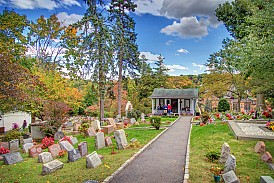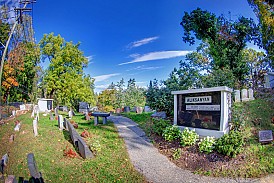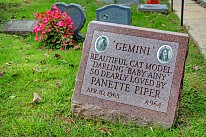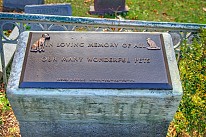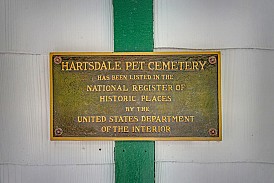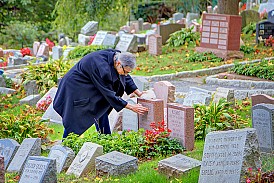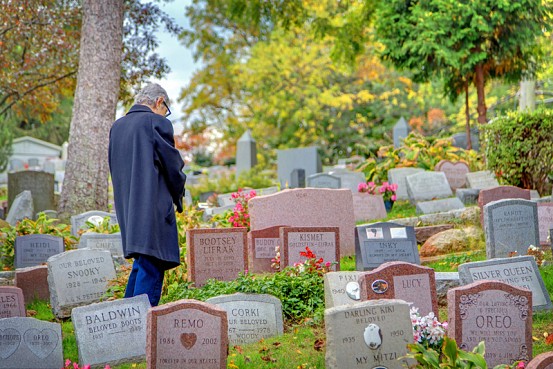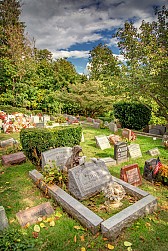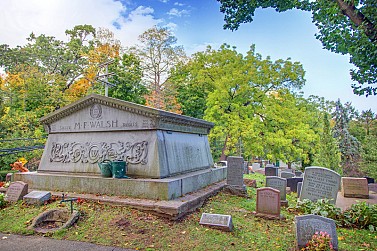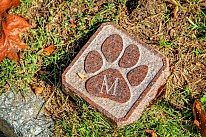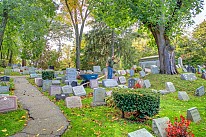Strangely enough, the railroad also played a part in the establishment of various cemeteries. As the city itself grew larger, not only did some former rural cemeteries get displaced, people with money wished to be interred in an attractive rural setting. Woodlawn Cemetery was established in 1863, and took in the remains of cemeteries displaced in the city proper, and grew to become a venerable place of final rest for thousands. Such growth was undoubtedly assisted by the nearby railroad, easily allowing loved ones to visit the graves of their friends and family. Further north along the Harlem Division, the Kensico Cemetery was also established as a beautiful, rural final resting place. Truly appealing to the wealthy of the city, Kensico offered a private railcar for rent for funerals which would transport people directly from Grand Central to the cemetery’s very own train station.
Though Woodlawn and Kensico may be the two most commonly known cemeteries that owe their growth to the Harlem Railroad, there is another slightly more unique cemetery that also falls into that category – the Hartsdale Pet Cemetery. Just like its brethren, the Hartsdale cemetery has seen gun salutes, bagpipers, and is the final resting place for thousands of friends – however the majority of them just happen to not be human. Buried within its grounds you’ll find the graves of war dogs, police dogs (including at least one MTAPD K9), a search and rescue dog that lost its life on September 11th, thousands of other cats and dogs, humans that opted for their cremains to be interred together with their beloved pets, and even a lion. It is also home to the War Dog Memorial, celebrating the animals that fought alongside their human handlers in the Great War.
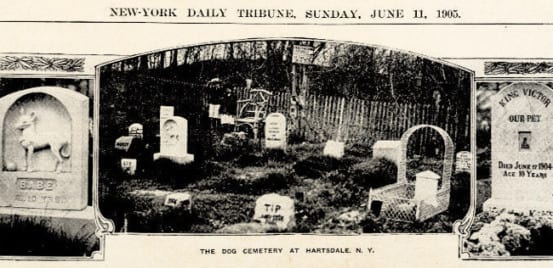
Established in 1896, the Hartsdale Pet Cemetery (originally called the Hartsdale Canine Cemetery) was simply an apple orchard at summer home of New York City veterinarian Samuel Johnson. After a distraught patron’s animal passed, he offered a spot for the animal to be buried on his land. After a newspaper got wind of the story and wrote about it, calls came in from many more distraught pet owners, and Johnson established a three acre section of his orchard for further pets to be buried. The usual arrangement entailed a deceased pet being delivered to Johnson’s office in New York, and from there the animal would be fitted into a casket and taken to Grand Central, where they would be loaded onto a Harlem Division train to Hartsdale. As news of the cemetery spread far and wide, one canine was even shipped by rail from Kalamazoo, Michigan, to be laid to rest at Hartsdale. Though the cemetery has grown since then, it is remains an idyllic place for a furry loved one to be buried.
Recognizing the cemetery’s long history, it was recently placed on the National Register of Historic Places. Though it may not be as close to the railroad as Woodlawn or Kensico, today’s Harlem Line played an integral part of the Hartsdale Pet Cemetery’s history. It is, however, within walking distance of Hartsdale station, and worth a visit to anyone in the area.
For those interested, the cemetery will be holding its annual Tree Lighting Ceremony on Saturday, December 6th at 4 PM, along with a “four legged” food drive to help local animal shelters and rescue groups.

